[ad_1]
Epimedium spp.
Simply because one thing appears to be like delicate doesn’t make it so. Barrenworts are proof of this.
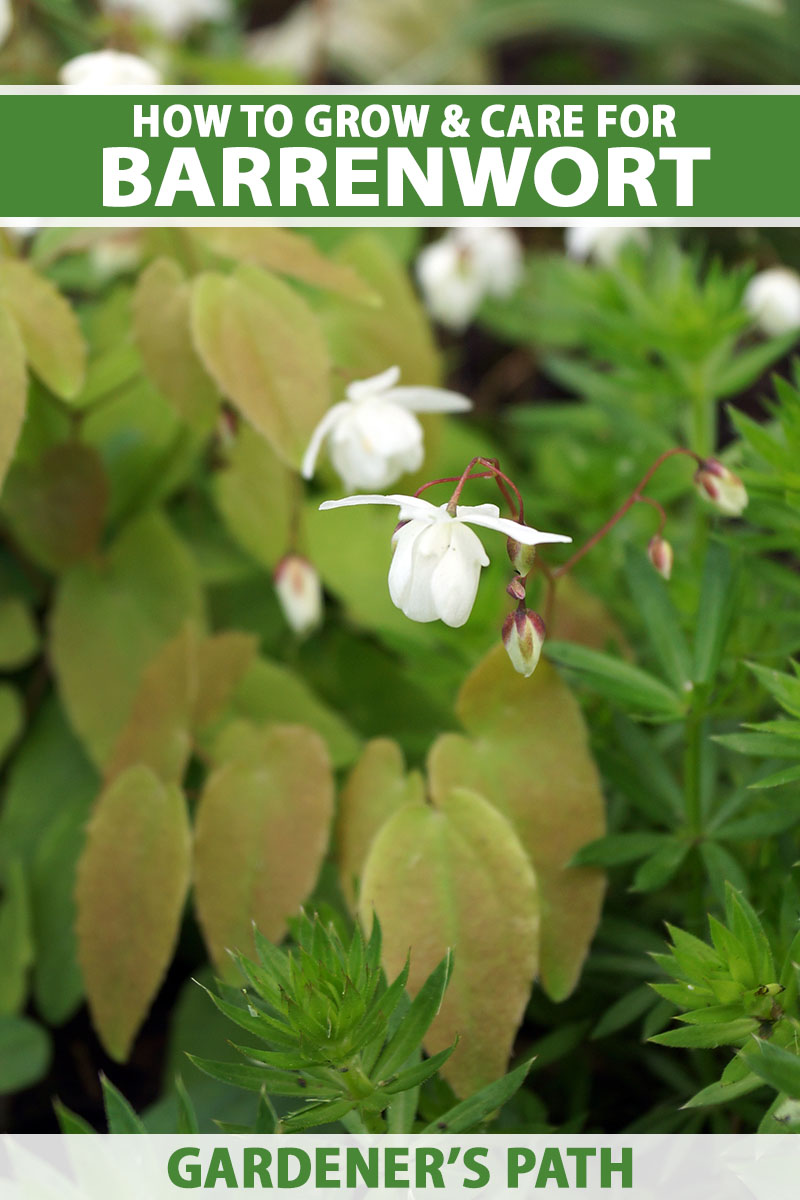
We hyperlink to distributors that can assist you discover related merchandise. For those who purchase from one in every of our hyperlinks, we could earn a fee.
Positive, there are a number of non-gardening examples that I might reference.
Exhibit A: a spider’s net (pound-for-pound, spider silk is stronger than metal).
Exhibit B: that one petite girl with a black belt at my Brazilian jiu-jitsu health club, who effortlessly ties everybody in knots throughout sparring periods.
Species of Epimedium are related of their misleading toughness – the dainty flowers could also be held excessive on skinny stems over lush foliage, however these vegetation are remarkably immune to drought and heavy shade.
Plus, they don’t fall sufferer to the pests and pathogens that strike down less-resilient vegetation.
Barrenworts are additionally very adaptable, they usually can simply develop in shallow soils. Plus, they’re positively attractive.
With this rising information, you’ll be taught every thing it is advisable begin rising these vegetation for your self.
Right here’s what we’ll go over:
What Is Barrenwort?
Often known as fairy wings or bishop’s hat, barrenworts are a bunch of herbaceous woodland perennials that belong to the Berberidaceae or barberry household.
The genus title Epimedium has its origin within the Greek epimedion, referring to an unknown Berberidaceae plant.
The widespread title “barrenwort” got here from the assumption that extended consumption of the roots causes infertility in girls.
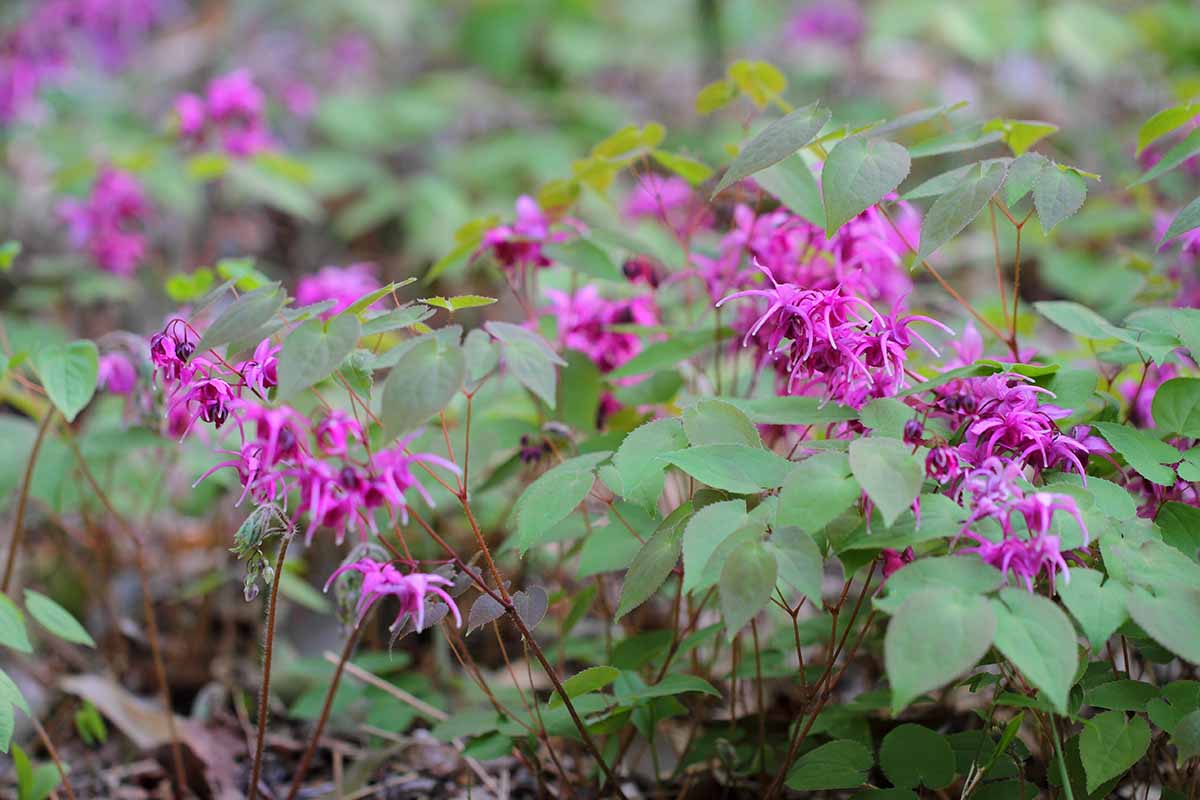
Hardy in USDA Zones 4 by means of 9, the Epimedium genus comprises over 60 completely different acknowledged species. Most are native to japanese Asia – western China specifically – whereas the remainder originate from the Mediterranean area.
Save for a handful of species, barrenwort leaves are compound, with every bearing three leathery leaflets. These are held on wiry stems.
Egg, coronary heart, triangle, and/or elongated leaf shapes are exhibited in varied species, in addition to green-to-red leaf colours.
Relying on the species and the local weather, barrenwort leaves could also be evergreen, deciduous, or someplace in between. In semi-evergreens, hues of purple to maroon-purple are revealed in fall and winter.
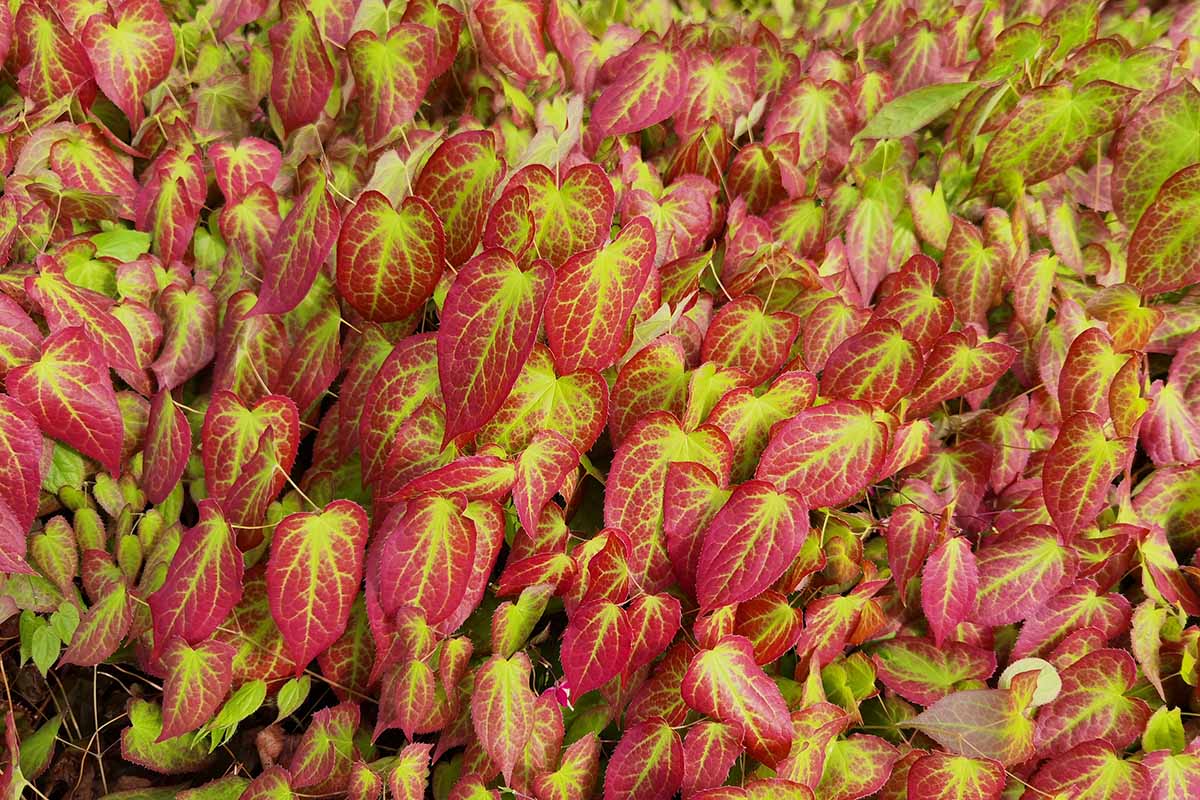
Barrenwort blooms have 4 wispy petals, and these emerge anyplace from early spring to early summer season.
The flowers sport yellow, pink, purple, purple, or white colours – the outer stamens and inside petals are sometimes two completely different shades of the identical coloration. Every clump of 4 protruding stamens appears to be like like a bishop’s hat, therefore the nickname.
Pollinated blooms give approach to seed pods resembling these of legumes, bursting with inexperienced seeds.
Equally to bloodroot, every seed bears an hooked up elaiosome: a fatty, high-protein construction that encourages ants to take them again to their nest, thus disseminating the seeds far and huge.
Barrenworts unfold by way of horizontal underground stems often known as rhizomes.
Like most rhizomatous vegetation, barrenwort ought to be monitored to make sure that it doesn’t unfold unchecked past its supposed planting web site.
However because of its gradual progress charge, you received’t should maintain as a lot of a watch on it as you would possibly with, say, a snake plant grown outdoor in the best circumstances.
Cultivation and Historical past
Moreover its decorative functions, barrenwort has been used traditionally by herbalists in China, Japan, and Korea as a therapy for impotence.
Sure, you learn that appropriately… flowers aren’t the one vegetation that may turn out to be useful on date night time.
In response to legend, barrenwort’s potential as an aphrodisiac was found by a Chinese language goat farmer.
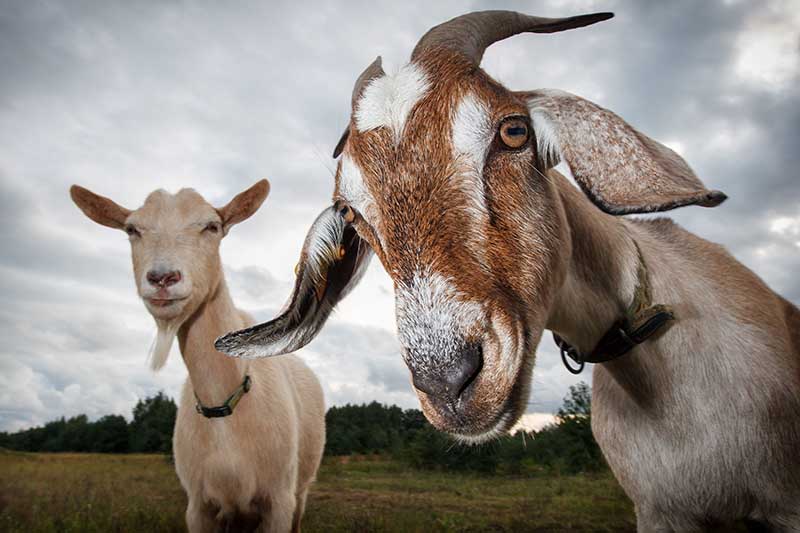
After his goats consumed the plant’s foliage, the farmer observed particularly randy conduct among the many herd. From this tall story comes yet one more nickname for Epimedium: yin yang huo, or sexy goat weed.
Moreover this quite stimulating potential facet impact of barrenwort consumption, barrenwort has been used to deal with joint ache and fatigue.
The plant has additionally been linked to improved cardiovascular, cerebrovascular, and immunomodulatory perform, in addition to anti-tumor and anti-aging results.
Regardless of these purported advantages, I nonetheless wouldn’t suggest foraging it out of your backyard as an natural substitute for Cialis or Viagra.
Remember to at all times seek the advice of with an expert earlier than embarking on any new natural complement regimens.
A Notice of Warning
Earlier than you take into account ingesting sexy goat weed, understand that consumption could result in extreme respiratory issues, affected coronary heart perform, and/or slowed blood clotting.
Moreover, ingesting barrenwort might doubtlessly hurt a growing fetus throughout being pregnant, and it might be accountable for different unfavourable well being results.
After China established its “open door coverage” in 1978, international botanists had been permitted entry to the nation, and plenty of hybrids and species turned launched to the western world.
At present, barrenwort is beloved as a tricky, adaptable planting for dry and/or shady spots within the backyard.
Propagation
Propagating barrenwort is greatest performed by way of seed, division, or transplanting.
From Seed
Seed propagation might be tough, since these seeds have to be sown recent as quickly as they drop from their pods in an effort to have the perfect likelihood at germinating.
You probably have mature vegetation out there control the growing seed pods.
Since cross-pollination between completely different close by species of those vegetation is feasible, you can find yourself with some fascinating offspring consequently!
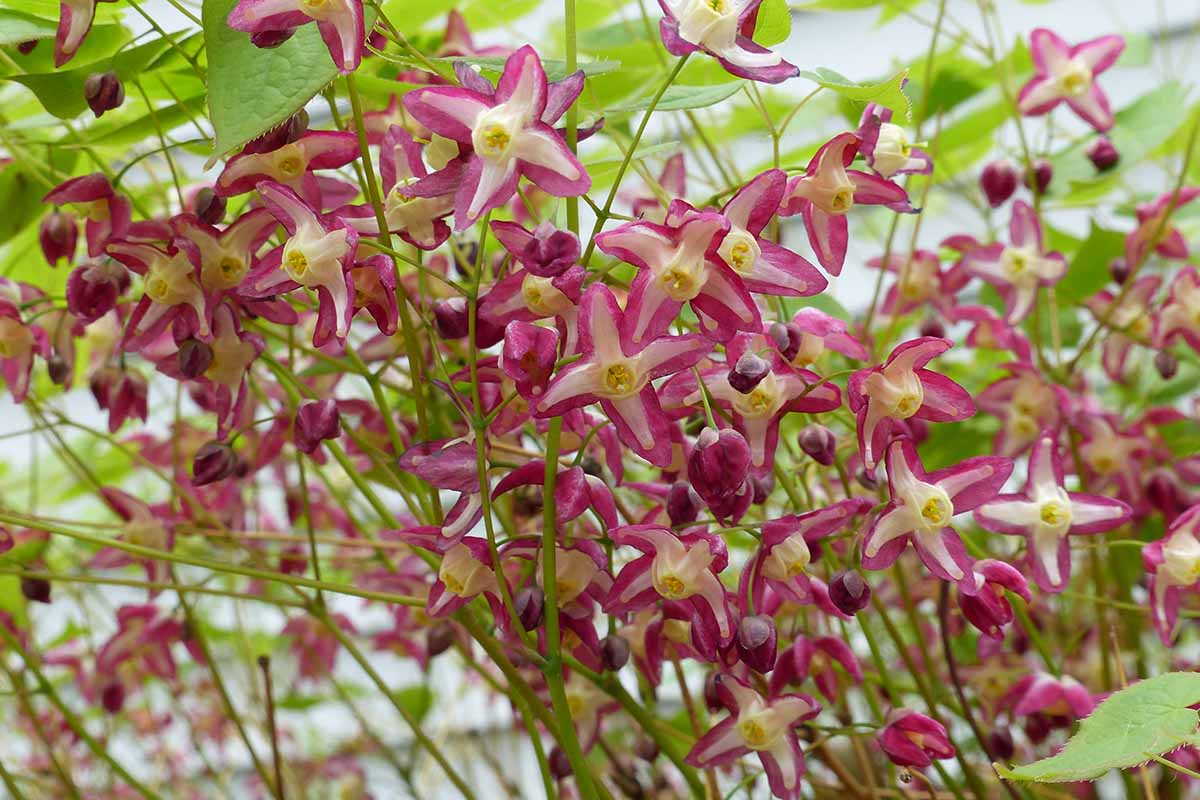
Put together a planting space in partial shade with well-draining soil wealthy in natural matter.
After amassing the seeds, instantly sow them just under the floor of the soil. House seeds a foot other than one another, and maintain the soil moist in order that they don’t dry out.
The seeds might want to undergo a interval of chilly stratification, remaining within the floor over the winter. Anticipate germination the next spring.
Proceed to maintain the soil across the seedlings moist as they develop, and they need to flower in three to 4 years’ time!
Through Division
To make sure plant vigor, barrenworts ought to be divided as soon as each three to 4 years. Division additionally serves as a fairly simple propagation methodology, and it may be performed in early fall or early spring.

A day or two earlier than you’re set to divide, water your barrenwort deeply. Ensure that to recollect the place your plantings are, in case they don’t have foliage at the moment to point their location.
Come division time, dig up the plant and separate its root mass into two or extra items, relying on the scale and quantity of divisions that you really want.
You’ll most likely want to make use of sharp and sterilized clippers on the robust woody crown to get you began, after which end tearing aside the clump of rhizomes together with your naked (or gloved) palms.
No must intention for a specific amount of nodes or something – it’s not an excellent exact course of.
After getting your divisions, they’re prepared to enter the bottom!
Through Transplanting
Whether or not it’s a potted specimen bought from the nursery or a divided portion taken from an current plant, transplanting barrenwort is fairly easy.
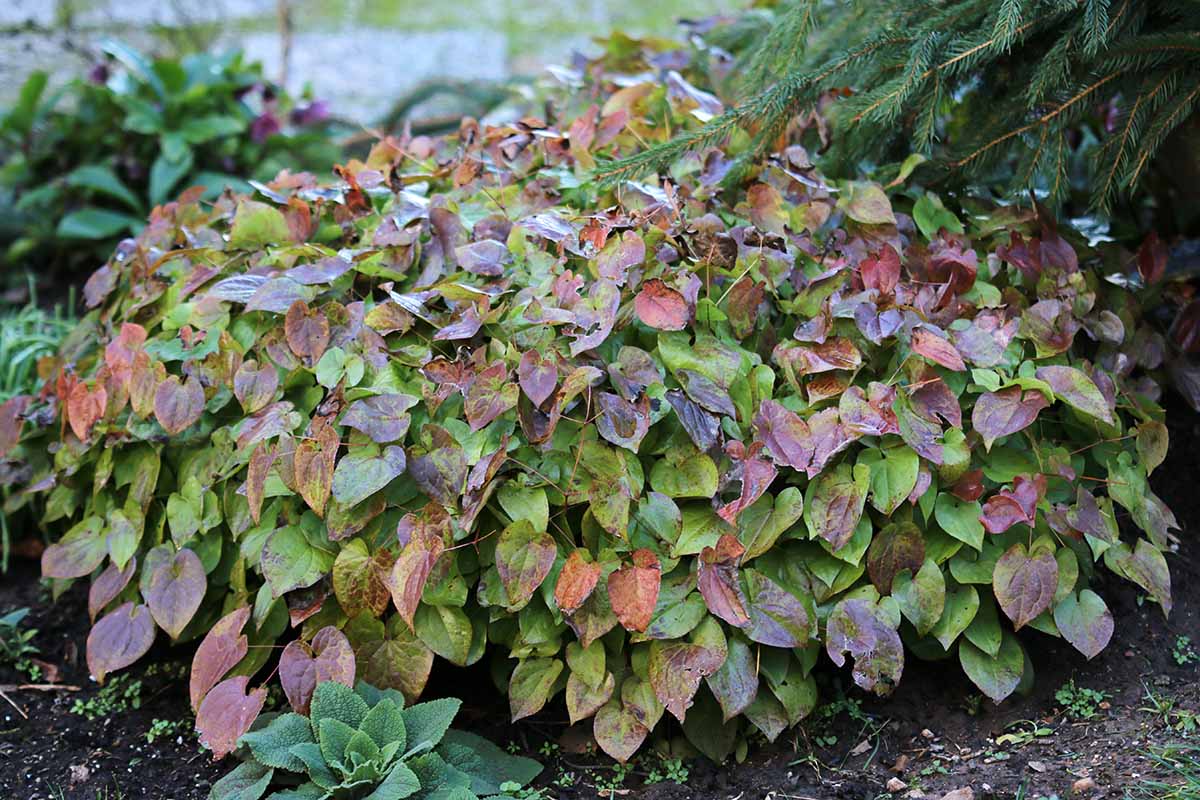
In your supposed planting web site, dig a gap about as deep and huge because the plant’s root system. A barrenwort’s roots don’t go down all that far, so the transplanting gap can be pretty shallow.
Decrease the plant into the outlet, backfill it with soil, and water it in. Transplants ought to turn into established in a few yr. Be diligent about holding the soil moist throughout this time.
Tips on how to Develop
Completely different species could not require an identical rising circumstances, however the next suggestions are a stable start line for any barrenwort proprietor.
Local weather and Publicity Wants
Collectively, vegetation within the Epimedium genus are hardy in Zones 4 to 9. The partial or dappled shade out there in shade or woodland gardens makes for the right publicity.
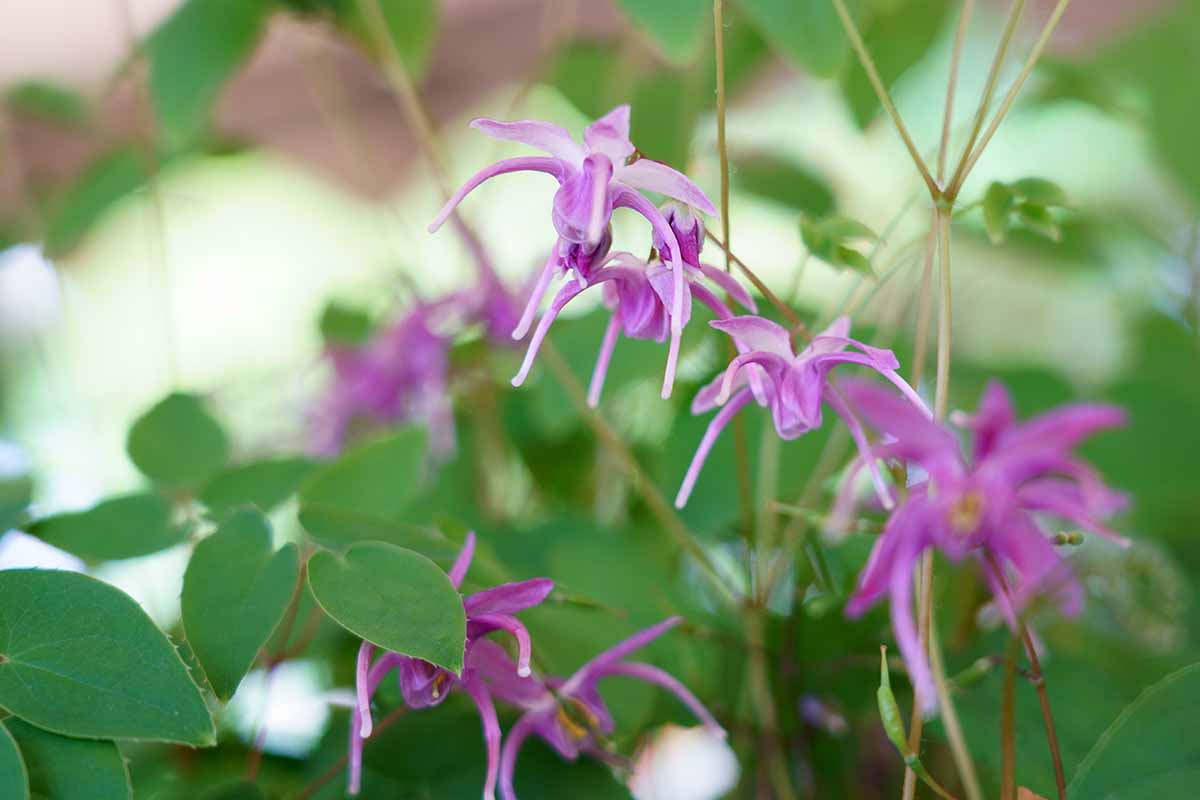
If deep shade is all you’ve gotten out there, don’t fear – barrenwort can tolerate it.
Specimens grown within the extra northern USDA Hardiness Zones throughout the acceptable vary for these vegetation can deal with larger quantities of solar, however they may want extra water to match their elevated evapotranspiration charges.
Soil Wants
Maybe surprisingly, ample fertility is crucial for barrenworts to flourish. Moreover, the soil ought to drain nicely.
On the whole, barrenwort does nicely with a pH vary of 5.0 to 7.0, however some species could tolerate pH values barely exterior of this vary.
Water and Fertilizer Wants
Ideally, it is best to water every time the soil floor feels dry to the contact.

Sustaining moist soil is perfect for these vegetation, however removed from obligatory.
As soon as established, barrenworts are fairly drought-tolerant, however don’t use this as an excuse to deal with these guys like succulents.
Whereas scant irrigation could not kill them, it’ll additional gradual their already sluggish progress charge.
These vegetation are used to sitting in fertile rising websites, so amending their soil with a pair inches of compost every spring will present the required natural materials.
Rising Suggestions
- Partial shade is right, and full shade is tolerable.
- Ensure that the soil is well-draining.
- Preserve soil moisture by watering every time the floor dries out.
Pruning and Upkeep
After the flowers bloom, be at liberty to deadhead them should you don’t intend to reap seed. Don’t overlook to divide your barrenworts each three to 4 years!

Yearly in mid- to late winter, deciduous barrenwort leaves ought to be reduce right down to the bottom, whereas evergreen and semi-evergreen Epimedium foliage might be left alone.
This makes the rising flowers extra seen come spring and summer season, and removes any insect-chewed or weather-beaten foliage.
As a approach to stop weed progress, preserve moisture, and improve the humus content material of soil even extra, add a pair inches of shredded leaf mulch to the soil surrounding your barrenwort every spring.
Species to Choose
“Paralysis by evaluation” can simply set in once you’re deciding on what sort of Epimedium to plant. These three species are unbelievable gateway barrenworts to select from.
Acuminatum
Often known as the acuminate barrenwort, E. acuminatum has slender, darkish inexperienced foliage with gently-pointed ideas, heart-shaped bases, and spiny leaf margins.
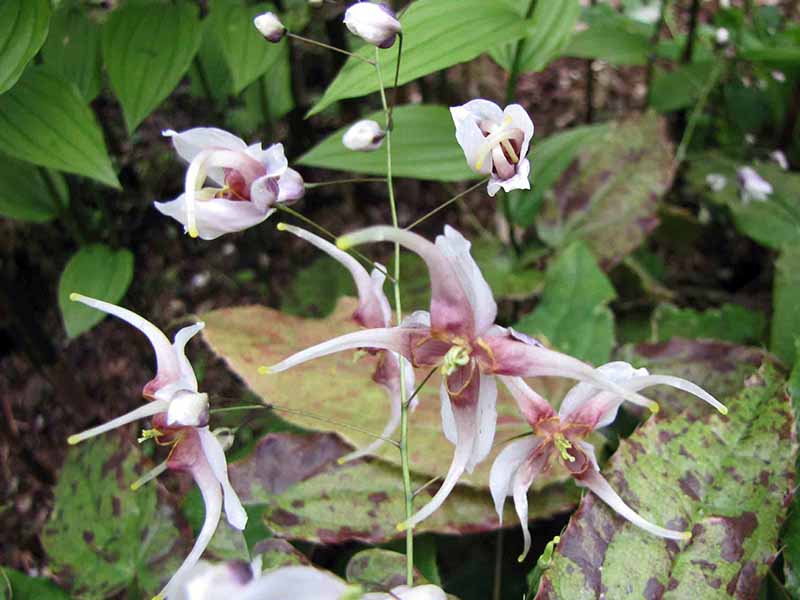
Spidery purple and white blooms dangle down in clumps from spindly flower stems, and these look rather a lot just like the grabber claws on an arcade recreation.
Native to the alpine woodlands of central and western China, this species varieties enticing mounds of foliage within the panorama, with compound inflorescences that poke out from the leaves and stand tall. A particular beaut.
Grandiflorum
You’ll actually “coronary heart” the heart-shaped foliage of E. grandiflorum, which has spiny leaf margins and a medium inexperienced hue.

Native to Korea, Japan, and northeast China, this plant additionally goes by the title large-flowered barrenwort, and produces blooms with white petals, purple to rose pink sepals, and prolonged nectar spurs.
When these flowers rise above the heart-shaped leaves with their rosy Valentine’s Day coloration, the temper is nicely and actually set… particularly when you think about the plant’s identified properties as an aphrodisiac.
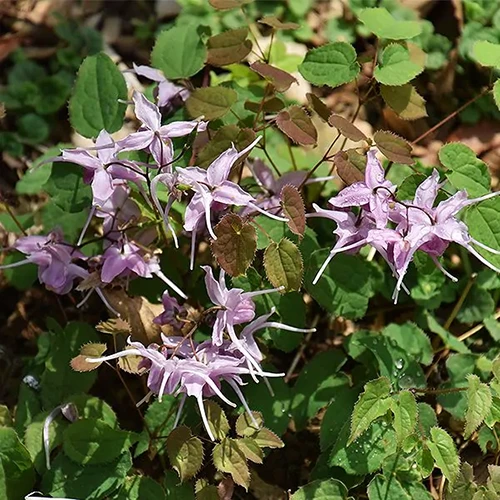
‘Lilafee’
For a fantastic E. grandiflorum cultivar with blooms that lean to the purple facet of the spectrum, behold ‘Lilafee,’ out there from Nature Hills Nursery in #1 containers.
Wushanense
First described in 1975 by Chinese language botanist T. S. Ying, E. wushanense – i.e. Wushan fairy wings – is likely one of the largest barrenwort species, flaunting mounds of leathery, darkish inexperienced, spiny, and lance-shaped foliage that may attain two toes in top.
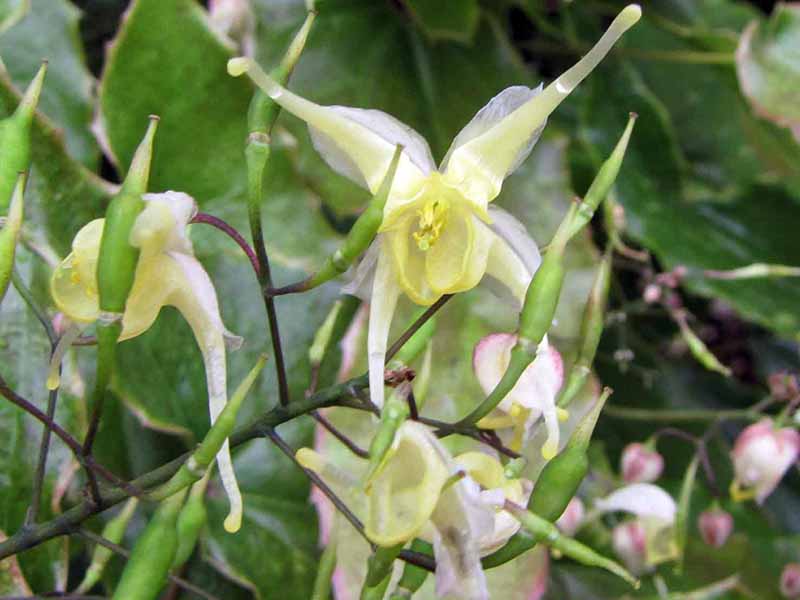
The leaves of E. wushanense undoubtedly steal the present, however the flowers are nothing to sneeze at, both (except you’ve gotten seasonal allergic reactions, maybe).
Clumps of cream-colored flowers bloom on erect stems that poke by means of the mound of evergreen foliage. Darkish inexperienced leaves and off-white blooms are actually a successful combo!
Managing Pests and Illness
Together with drought and shade, barrenwort is immune to a good quantity of pests and well being issues that will plague different vegetation, similar to deer, rabbits, bugs, and ailments.
Nicely… most bugs and ailments, anyway.
Pests
Bugs can typically vector pathogens as they feed from vegetation, so stopping and managing infestations will certainly make it easier to out on the illness entrance.
Slugs
These terrestrial, shell-less mollusks will go away irregularly-shaped, smooth-edged holes in leaves. Moreover lowering aesthetics, the diminished foliage impacts photosynthesis, which stunts progress.
Efficient slug administration begins with prevention: eradicate potential shady spots the place slugs can disguise.
This can be robust in a shade backyard or wooded space, however weeds, stones, and plant particles might be eliminated as wanted.
Have an infestation in your palms? Come nighttime, use a flashlight to find the glistening slime trails that may be adopted again to a slug’s location.
As soon as you discover them, decide them off by hand and seal them in plastic luggage for disposal.
Setting out traps can function a extra passive approach to catch slugs.
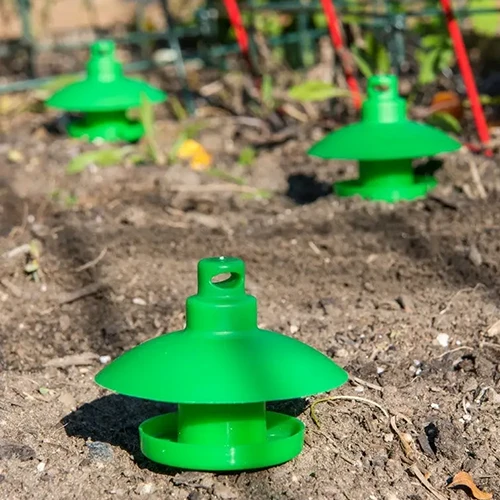
Slug and Snail Traps
This three-pack of ABS plastic traps from Gardener’s Provide is a unbelievable set of slug snares. Merely pour in some beer, set the traps, and anticipate the slugs to drown.
Vine Weevils
Members of a bunch of beetle households throughout the Curculionoidea superfamily, vine weevils can feed on barrenwort in any respect phases of their life cycle.
The adults are black with dirty-yellow markings on the wing instances, and the legless, plump, and C-shaped grubs have gentle brown heads and white our bodies.
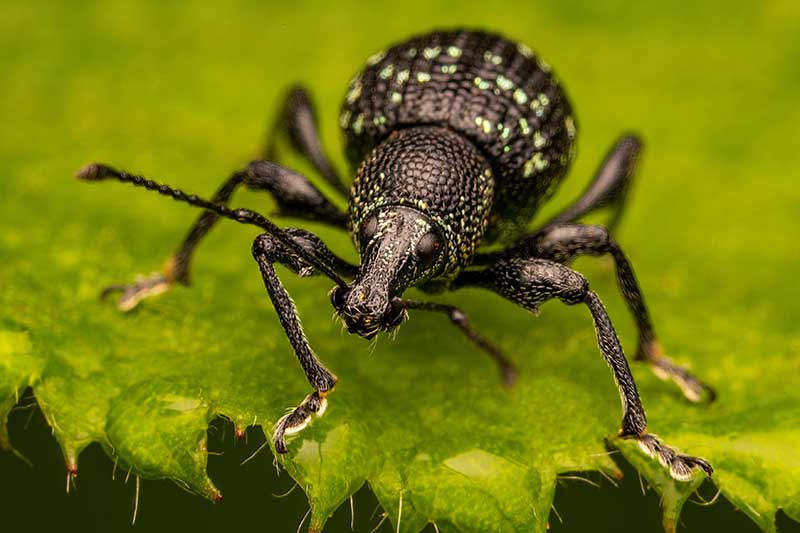
The adults munch irregular notches from the leaf margins, whereas the grubs eat the roots. The foliar injury is just about a beauty subject, whereas root consumption can result in plant wilting and demise.
After the solar goes down, the adults might be tracked down with the help of a flashlight and eliminated by hand.
Sticky traps positioned close by can lure vine weevils and act as a further infestation indicator, permitting gardeners to observe pest exercise.
Birds, amphibians, shrews, and different predators eat vine weevil adults and grubs, so you’ll want to foster loads of biodiversity within the backyard!
To particularly goal vine weevil grubs, sure species of useful nematodes similar to Heterorhabditis bacteriophora are fairly efficient when utilized to the soil.

NemaSeek Helpful Nematodes
If microscopic organic warfare pursuits you, then it is best to give this these useful H. bacteriophora nematodes from Arbico Organics a attempt.
Illness
A normal prescription for illness prevention contains utilizing pathogen-free vegetation, clear soil, and sanitized gardening instruments.
Mosaic Virus
Affecting greater than 150 completely different sorts of vegetation, mosaic viruses are simply recognizable, making a “mosaic” of white, yellow, and/or discolored inexperienced spots and streaks on the foliage of contaminated vegetation. Development is usually stunted and leaves turn into distorted.

As a result of there isn’t any identified remedy for mosaic virus, any contaminated vegetation ought to be eliminated and destroyed.
Since sure weeds can host the illness, it’s necessary to maintain on high of your weeding practices.
Finest Makes use of
Apart from its medicinal makes use of, barrenwort flaunts a surprising look. These species look their greatest when used as floor cowl in a shade or woodland backyard.
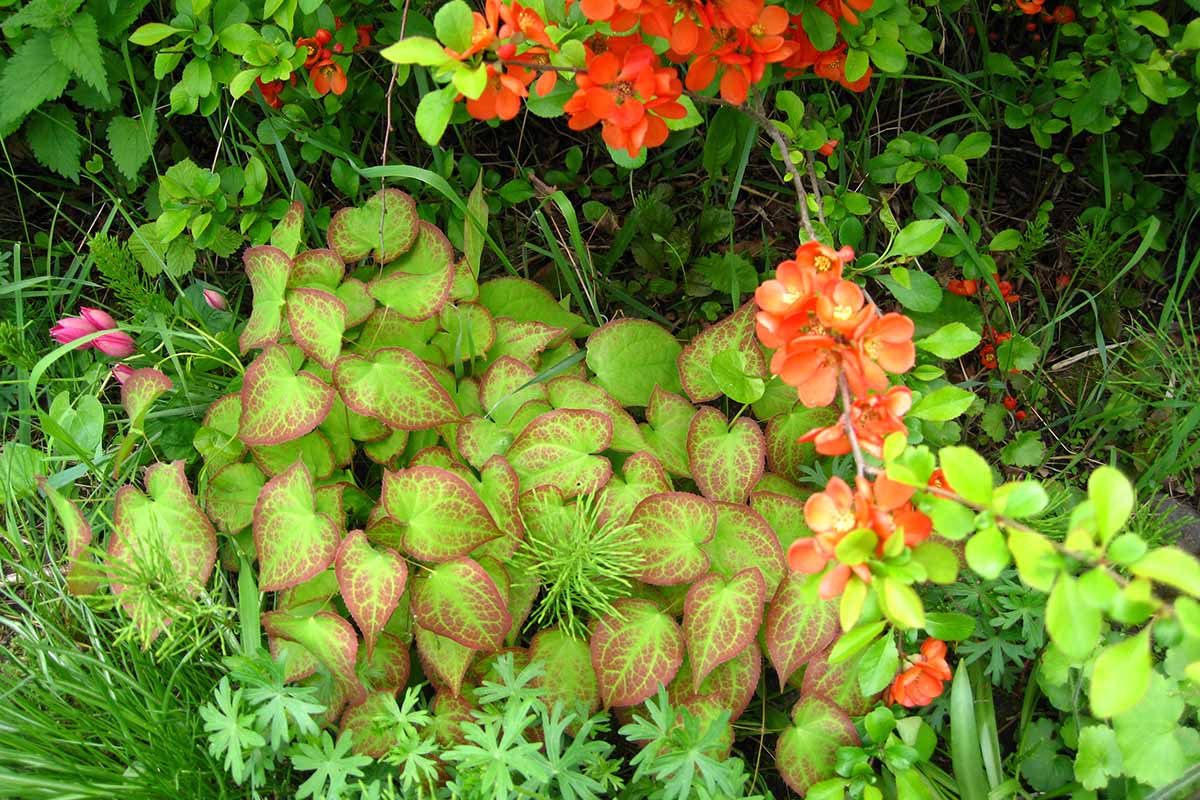
The vanity of their root techniques makes them fairly adept at rising between the big roots of timber, in addition to amongst different plantings as a type of “dwelling mulch.”
Moreover, the fibrous roots make the plant quite efficient at controlling soil erosion.
Fast Reference Rising Information
| Plant Kind: | Herbaceous perennial | Flower/Foliage Colour: | White, yellow, pink, purple/inexperienced, purple |
| Native to: | Asia, Mediterranean area | Water Wants: | Reasonable |
| Hardiness (USDA Zones): | 5-9 | Upkeep: | Low |
| Bloom Time: | Early spring to early summer season | Tolerance: | Deer, dry soil, heavy shade, rabbits, rocky soil |
| Publicity: | Partial shade | Soil Kind: | Fertile |
| Time to Maturity: | 3-4 years | Soil pH: | 5.0-7.0 |
| Spacing: | 12 inches | Soil Drainage: | Nicely-draining |
| Planting Depth: | Slightly below floor (seeds), depth of root system (transplants) | Attracts: | Bees, different pollinating bugs |
| Top: | 6-24 inches | Makes use of: | Floor cowl, medicinal herb backyard, shade backyard, woodland backyard |
| Unfold: | 12-36 inches | Household: | Berberidaceae |
| Development Charge: | Sluggish | Genus: | Epimedium |
| Widespread Pests and Illnesses: | Slugs, vine weevils; mosaic virus | Species: | Acuminatum, grandiflorum, wushanense |
Barrenworts: Good for Worrywarts
For the type of gardener that freaks out on the slightest little bit of wilting, barrenwort is the right low-maintenance plant.
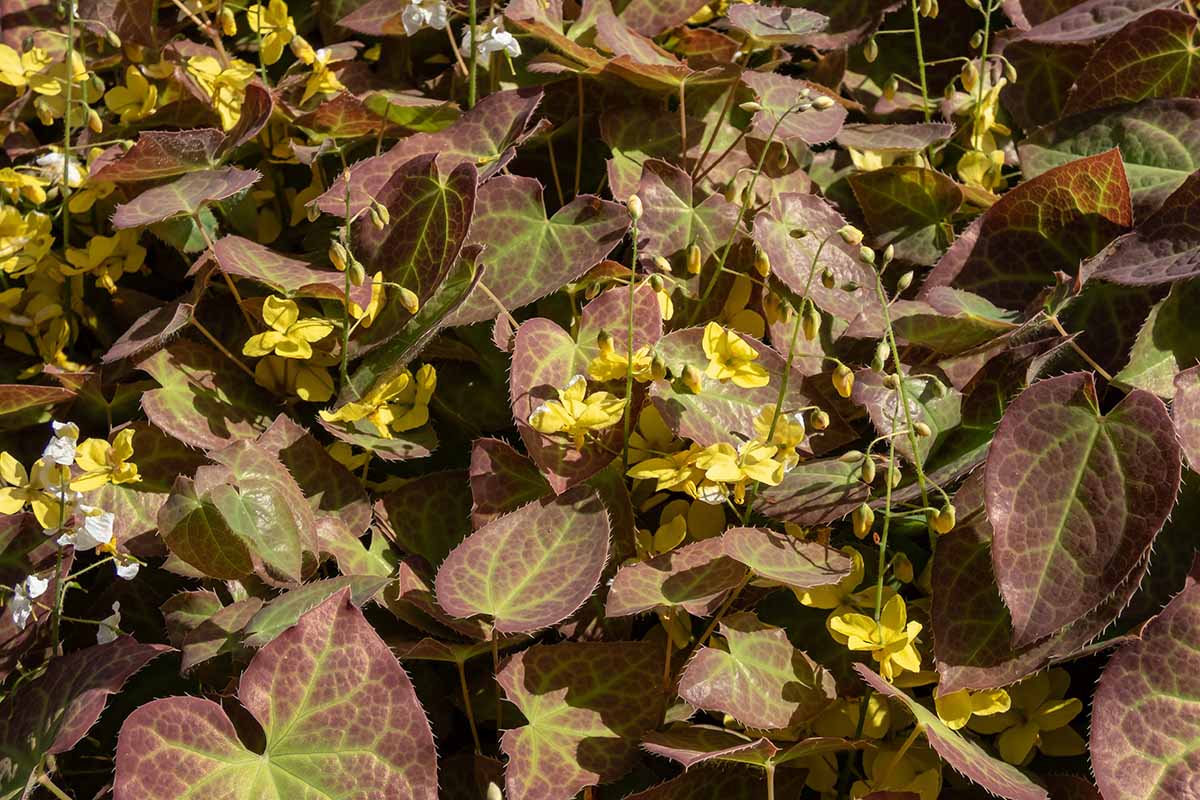
With sturdiness in opposition to drought, heavy shade, and most well being points, a barrenwort deserves little or no concern, leaving you free to direct your worries towards different, extra fragile plantings.
When you begin rising these guys, you’ll see for your self how simple and laid-back barrenwort care might be. Go forward and provides it a attempt!
To any readers with questions or remarks, the feedback part is your oyster.
And for extra details about rising shade-loving vegetation in your backyard, try these guides subsequent:
[ad_2]
Source link

